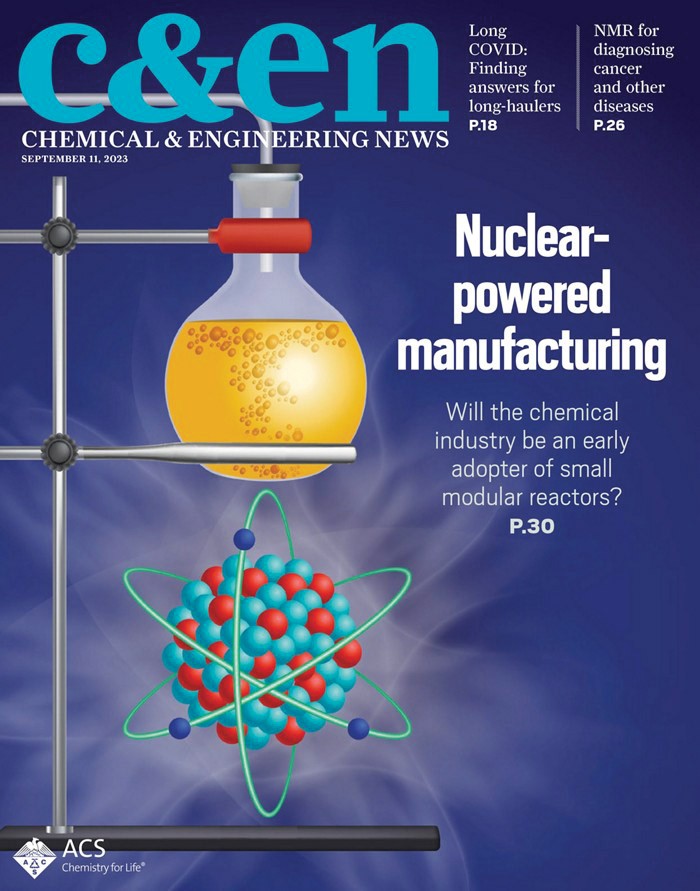Advertisement
Grab your lab coat. Let's get started
Welcome!
Welcome!
Create an account below to get 6 C&EN articles per month, receive newsletters and more - all free.
It seems this is your first time logging in online. Please enter the following information to continue.
As an ACS member you automatically get access to this site. All we need is few more details to create your reading experience.
Not you? Sign in with a different account.
Not you? Sign in with a different account.
ERROR 1
ERROR 1
ERROR 2
ERROR 2
ERROR 2
ERROR 2
ERROR 2
Password and Confirm password must match.
If you have an ACS member number, please enter it here so we can link this account to your membership. (optional)
ERROR 2
ACS values your privacy. By submitting your information, you are gaining access to C&EN and subscribing to our weekly newsletter. We use the information you provide to make your reading experience better, and we will never sell your data to third party members.
Nuclear Power
Reactions: The problem of nuclear waste
November 9, 2023
| A version of this story appeared in
Volume 101, Issue 37
Letters to the editor
Nuclear waste
A provocative editorial in every sense of the word (Sept. 18, 2023, page 2). Yes, we do have a looming disaster of our impact on the global climate, one that will remain well beyond our remaining lifetimes today. Yes, urgent action is required. However, I would like to suggest that conventional nuclear power is not the solution, or even close to it. There are several reasons. I shall stick with one, not the elephant in the room but the mastodon in the room: nuclear waste.
Mitch Jacoby mentions permanent repositories. In their current form these are major environmental disasters waiting to happen. Why? The main reason is that even with the vitrification technologies of today, it is near impossible to understand the chemistry, the materials science, and the physics of these matrices in 100 years, 1,000 years, or 1 million years in the future. Evidence from Hanford and continuing efforts of its cleanup tell us much of what to expect to happen in these so-called permanent repositories.
If we do go this route, they will need to remain permanently accessible for the continued reprocessing for several hundreds of thousands of years—potentially longer periods. Imagine what the person-hour rate would be in 500,000 years. Imagine how people will look back on the generation that created this waste. Of course, this assumes we do not develop technologies to deal with this waste in the future, which we well might; however, the waste still needs to be accessible. It is of course possible that this waste would undergo subduction into the mantle. A proper life-cycle analysis (ISO 144040), including the continuous waste reprocessing cycles for several thousands of years, would show it to be a very expensive energy source, indeed.
Paul Jonsen
Harrogate, England
Nowhere in “Can Small Modular Reactors Save Nuclear Energy?” was there a mention of how the waste from these reactors will be disposed of (Sept. 11, 2023, page 30). Maybe we should figure out what to do with the mountains of nuclear waste already created over the last 7 decades of nuclear power generation before we start generating more.
Jim Schulte
Cicero, Illinois



Join the conversation
Contact the reporter
Submit a Letter to the Editor for publication
Engage with us on Twitter